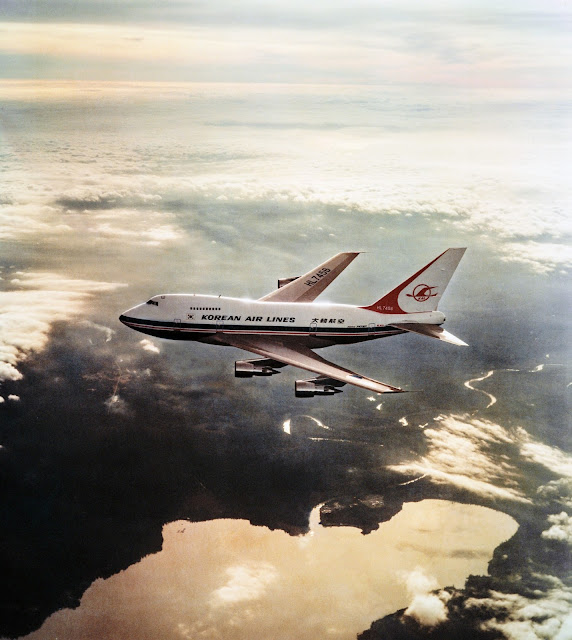 |
| N747PA - the second 747 to be built, and the first to be delivered and operated commercially. Seen here on a pre-delivery flight over Sequim Bay, WA - some time in 1970. |
N747PA suffered only one serious accident during its 20-year career, and that was pretty soon after entering service, in July 1971. Due to a series of errors on the part of the ground control and onboard crew, N747PA struck lighting structures at the end of the runway as it tried to take off from San Francisco international airport, causing serious damage to the rear fuselage, landing gear, hydraulics, engines and several passengers.
According to Wikipedia, 'the right main under-body landing gear was forced up and into the fuselage, and the left under-body landing gear was ripped loose and remained dangling beneath the aircraft'.
Most frighteningly, 17ft lengths of girder penetrated the cabin, seriously injuring two passengers seated towards the rear of the aeroplane, one of whom had a leg 'near amputated' by the impact.
After the accident, the crew elected to continue takeoff, circled around for a couple of hours to dump fuel (which I imagine the guy with the severed leg just loved), and then made an emergency landing back at San Francisco. When it came to a halt, the plane collapsed nose-high onto its tail, and several passengers sustained serious back injuries during the botched evacuation, because (duh) the front evacuation slides were too high off the ground. The full accident report is here, if you're interested, and here are some pictures of N747PA undergoing repair.
The remainder of N747PA's operational career appears to have been uneventful. But unusually, things got interesting again after it was finally scrapped in 1999...
A South Korean couple bought N747PA (which by then had been sliced into sections) from a scrapyard in South California in 2000, and had it shipped in pieces at great expense to a suburban lot to the north of Seoul, where they painted it to sorta kinda represent Air Force One (because why not?) and 'converted' it into a noodle restaurant.
The restaurant failed, (there's a pun in there somewhere about 'overheads' but I don't have the energy today) and after sitting in a state of increasing disrepair for years while the owners tried and failed to sell it, N747PA was finally cut up and scrapped for good in 2010. The LA times has a depressing article about the whole sorry affair here. I probably think too hard about this stuff, but these pictures make me sad.
The picture at the top of this page is a scan from an 8x10in color print that I found in a junk shop. Taken (appropriately) at sunset, the original print has a very strong orange/yellow color cast which I wasn't really able to correct, so after doing the basics - dust-reduction, contrast adjustment and so on - I converted it to black and white. A few minutes on Google Earth identified the distinctive landmass at upper-left as Paradise Cove, at Sequim Bay - a few minutes flying time from Seattle.







